Intel’s Tiger Lake 11th Gen Core i7-1185G7 Review and Deep Dive: Baskin’ for the Exotic
by Dr. Ian Cutress & Andrei Frumusanu on September 17, 2020 9:35 AM EST- Posted in
- CPUs
- Intel
- 10nm
- Tiger Lake
- Xe-LP
- Willow Cove
- SuperFin
- 11th Gen
- i7-1185G7
- Tiger King
CPU Performance: Office and Web
Our previous set of ‘office’ benchmarks have often been a mix of science and synthetics, so this time we wanted to keep our office section purely on real world performance.
Agisoft Photoscan 1.3.3: link
Photoscan stays in our benchmark suite from the previous benchmark scripts, but is updated to the 1.3.3 Pro version. As this benchmark has evolved, features such as Speed Shift or XFR on the latest processors come into play as it has many segments in a variable threaded workload.
The concept of Photoscan is about translating many 2D images into a 3D model - so the more detailed the images, and the more you have, the better the final 3D model in both spatial accuracy and texturing accuracy. The algorithm has four stages, with some parts of the stages being single-threaded and others multi-threaded, along with some cache/memory dependency in there as well. For some of the more variable threaded workload, features such as Speed Shift and XFR will be able to take advantage of CPU stalls or downtime, giving sizeable speedups on newer microarchitectures.
For the update to version 1.3.3, the Agisoft software now supports command line operation. Agisoft provided us with a set of new images for this version of the test, and a python script to run it. We’ve modified the script slightly by changing some quality settings for the sake of the benchmark suite length, as well as adjusting how the final timing data is recorded. The python script dumps the results file in the format of our choosing. For our test we obtain the time for each stage of the benchmark, as well as the overall time.
The final result is a table that looks like this:
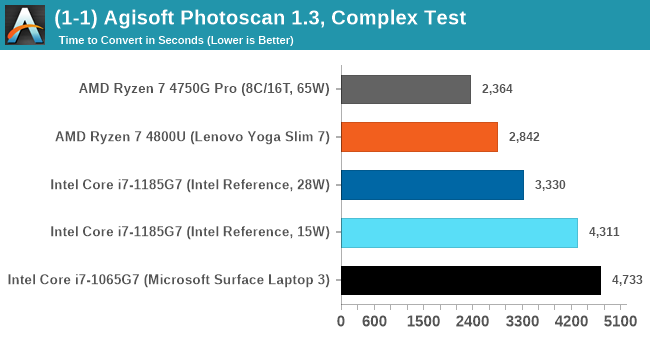
As explained in the power tests, the 4800U with double the cores wins out here, and due to the vector pressure also wins on power efficiency. There’s still a sizeable uplift from Ice Lake to Tiger Lake at 15 W, although 28 W is needed to get something sizeable.
Mozilla Kraken 1.1
Kraken is a 2010 benchmark from Mozilla and does a series of JavaScript tests. These tests are a little more involved than previous tests, looking at artificial intelligence, audio manipulation, image manipulation, json parsing, and cryptographic functions. The benchmark starts with an initial download of data for the audio and imaging, and then runs through 10 times giving a timed result.
Automation involves loading the direct webpage where the test is run and putting it through. All CPUs finish the test in under a couple of minutes, so we put that as the end point and copy the page contents into the clipboard before parsing the result. Each run of the test on most CPUs takes from half-a-second to a few seconds.
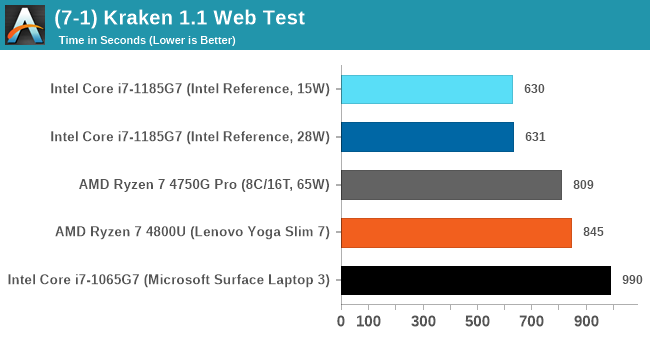
Both the Tiger Lake results are very fast, not showing much difference between the power modes. Intel pushes ahead of AMD here, and ultimately a sizable jump over Ice Lake.
Google Octane 2.0
Our second test is also JavaScript based, but uses a lot more variation of newer JS techniques, such as object-oriented programming, kernel simulation, object creation/destruction, garbage collection, array manipulations, compiler latency and code execution.
Octane was developed after the discontinuation of other tests, with the goal of being more web-like than previous tests. It has been a popular benchmark, making it an obvious target for optimizations in the JavaScript engines. Ultimately it was retired in early 2017 due to this, although it is still widely used as a tool to determine general CPU performance in a number of web tasks.
Octane’s automation is a little different than the others: there is no direct website to go to in order to run the benchmark. The benchmark page is opened, but the user has to navigate to the ‘start’ button or open the console and initiate the JavaScript required to run the test. The test also does not show an obvious end-point, but luckily does try and aim for a fixed time for each processor. This is similar to some of our other tests, that loop around a fixed time before ending. Unfortunately this doesn’t work if the first loop goes beyond that fixed time, as the loop still has to finish. For Octane, we have set it to 75 seconds per run, and we loop the whole test four times.
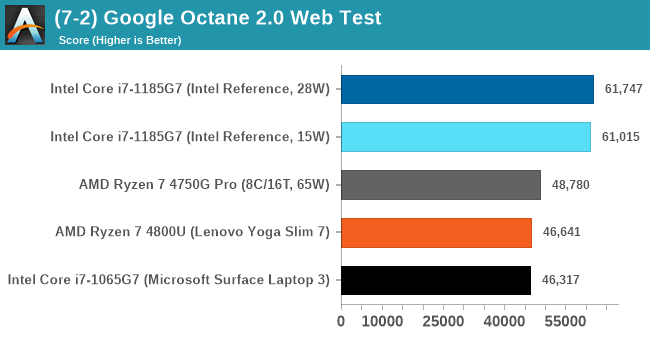
The Tiger Lake system reaches new records in Optane. If there’s anything this system is fast at, it is web workloads.
Speedometer 2: JavaScript Frameworks
Our newest web test is Speedometer 2, which is a test over a series of JavaScript frameworks to do three simple things: built a list, enable each item in the list, and remove the list. All the frameworks implement the same visual cues, but obviously apply them from different coding angles.
Our test goes through the list of frameworks, and produces a final score indicative of ‘rpm’, one of the benchmarks internal metrics. Rather than use the main interface, we go to the admin interface through the about page and manage the results there. It involves saving the webpage when the test is complete and parsing the final result.
We repeat over the benchmark for a dozen loops, taking the average of the last five.
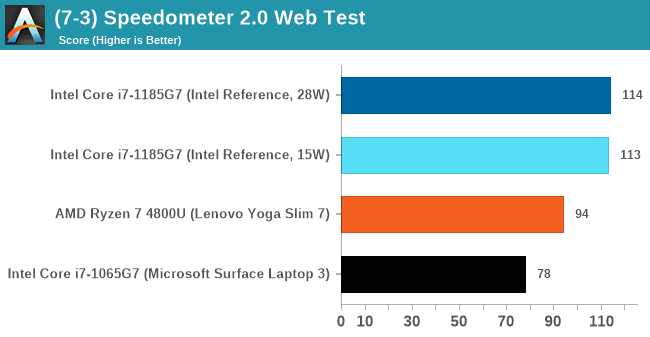
Again, another good win for Tiger Lake.


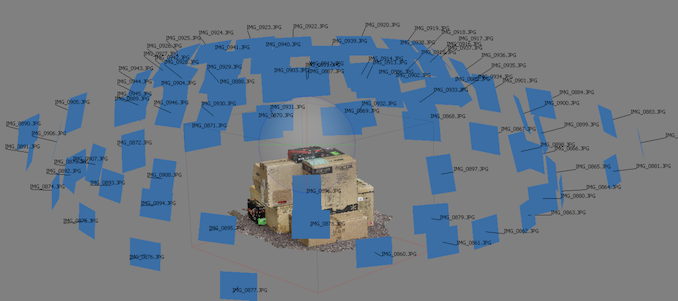
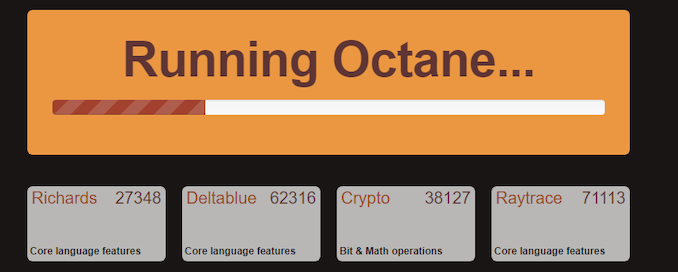
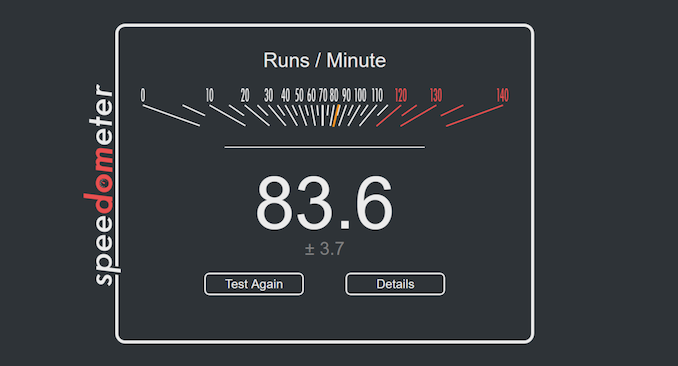








253 Comments
View All Comments
AMDSuperFan - Monday, September 21, 2020 - link
What really concerns me is this Intel Tiger is built on a 10mm process that looks like it is as good or better than the TSMC 7nm process. https://en.wikipedia.org/wiki/7_nm_process. They do not talk about the +++ superfin variants for node density. We need Super Navi to fight against this. We know for laptops or gaming, nobody can touch big navi. Nvidia cannot. It will be much faster I think than 3090 or even 4090 by everything I see. Nvidia might be out of their league finally and put into their place. I would not be surprised to see Big Navi designs at 150w with 10x the speed.Rtx dude - Monday, September 28, 2020 - link
3090 is twice the size of 3080. So, it will ebd big NAVI in performance and bebchmarksShowtime - Friday, September 18, 2020 - link
Sorry, but with your name alone, we can't take anything you say seriously.MrVibrato - Saturday, September 19, 2020 - link
Oh, but there are quite a few who couldn't resist the bait. Which, and this is one of my guilty pleasures, makes for entertaining reading...hecksagon - Friday, September 18, 2020 - link
He's referencing the performance improvement we will see in AMD's integrated graphics once the architectural improvements from Big Navi trickle down.dotjaz - Friday, September 18, 2020 - link
In the meantime, Intel wins for the next 8 months or so. We don't even know if Van Gogh can beat TGL yet.Spunjji - Friday, September 18, 2020 - link
That's a charitable interpretation, but actually this account is just a sockpuppet for an Intel shill who got tired of waiting for AMD fanboys to show up and so made one of their own. Everything they post is nonsensical junk.AMDSuperFan - Monday, September 21, 2020 - link
Even as a superfan it seems obvious that our amd cannot fight against this new technology. How is a usurper faster than us on video for gaming? As the owner of ATI, we are a video gaming company. Nvidia with their Voodoo 2 technology has nothing on ATI. My 7900 card is still fast for many games even today - but the same cannot be said for Voodoo 2 cards. But we have big things on the future and we should get back our championship in 2022.PixyMisa - Thursday, September 17, 2020 - link
This was almost funny once.SarahKerrigan - Thursday, September 17, 2020 - link
Big Navi is a multi-hundred-watt dGPU. This is a laptop processor. They don't compete with each other at all.